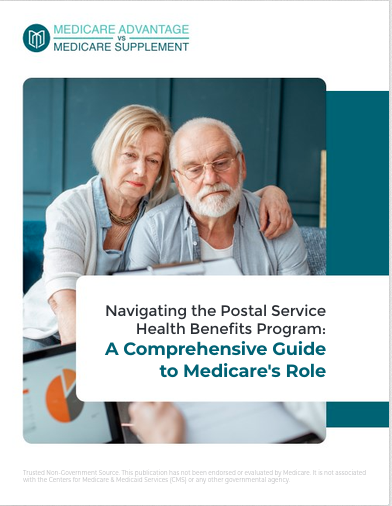Key Takeaways:
-
Medicare Part A isn’t automatically free for everyone. Your work history and tax contributions determine whether you pay a premium.
-
Understanding your costs ahead of time helps you plan for potential expenses like deductibles, coinsurance, and late enrollment penalties.
Understanding Medicare Part A Costs: What You Need to Know
Medicare is a lifeline for millions of Americans, but one of the biggest misconceptions is that Medicare Part A is always free. While many people do qualify for premium-free Part A, others may find themselves paying a monthly cost. Let’s break down why some people have to pay, how to check your eligibility, and what other costs might be involved.
Who Gets Medicare Part A for Free?
You might qualify for premium-free Part A if you or your spouse worked and paid Medicare taxes for at least 40 quarters (10 years). Here’s how it works:
-
If you or your spouse worked and paid Medicare payroll taxes for at least 10 years, you won’t pay a premium for Part A.
-
If you worked 30 to 39 quarters, you will have to pay a reduced monthly premium.
-
If you worked fewer than 30 quarters, you will need to pay the full monthly premium for Part A.
Even if you never worked, you might still qualify for premium-free Part A based on your spouse’s work history. If your spouse meets the 40-quarter requirement, you could receive Part A without a premium once you turn 65.
How to Check If You Will Pay for Medicare Part A
Before enrolling, it’s important to confirm whether you will pay for Medicare Part A. Here are a few ways to check:
-
Review Your Social Security Statement – You can check your work history and quarters of Medicare-covered employment on the Social Security Administration (SSA) website.
-
Contact the SSA – If you’re unsure about your eligibility, calling the Social Security Administration can give you a clear answer.
-
Check Your Spouse’s Work Record – If your spouse qualifies, you may be eligible for premium-free Part A based on their record.
What If You Have to Pay for Part A?
If you don’t qualify for premium-free Part A, you can still enroll, but you’ll need to pay a monthly premium. The amount depends on how many work credits you have.
-
30-39 work credits: You pay a lower premium.
-
Fewer than 30 work credits: You pay the full premium amount.
Additionally, if you delay enrolling in Medicare Part A when you first become eligible, you may face a late enrollment penalty. This penalty increases your Part A premium by 10% for twice the number of years you delayed enrollment. For example, if you wait two years to sign up, you’ll pay the higher premium for four years.
Other Medicare Part A Costs You Should Know About
Even if you qualify for premium-free Part A, that doesn’t mean your healthcare is entirely free. You still need to be aware of other costs, such as:
The Part A Deductible
Each benefit period, you must meet a deductible before Medicare Part A starts paying for hospital care. The benefit period resets if you have been out of the hospital for 60 consecutive days, meaning you might have to pay the deductible more than once in a year.
Hospital Stays and Coinsurance
After meeting the deductible, Medicare Part A covers your hospital stay for a set period, but you still have coinsurance costs depending on how long you stay in the hospital.
-
Days 1-60: No coinsurance after the deductible is met.
-
Days 61-90: Daily coinsurance costs apply.
-
Beyond 90 Days: You use lifetime reserve days, which have a higher coinsurance amount. You only get 60 lifetime reserve days total.
-
After using all reserve days: You pay all costs out of pocket.
Skilled Nursing Facility (SNF) Costs
Medicare Part A also covers skilled nursing facility (SNF) care, but only under certain conditions:
-
You must have had a qualifying hospital stay of at least three days.
-
Medicare covers SNF care for up to 100 days per benefit period, but coinsurance applies after day 20.
-
Days 1-20: Covered at no cost to you.
-
Days 21-100: You pay daily coinsurance.
-
After 100 days: You pay all costs.
Hospice Care Costs
If you need hospice care, Medicare Part A covers most expenses, but you might still have small copayments for prescription drugs and respite care.
What If You Can’t Afford Medicare Part A?
If paying for Medicare Part A is a financial burden, you may have options for assistance:
-
Medicaid: If you have a low income, you may qualify for Medicaid, which could help cover Medicare costs.
-
Medicare Savings Programs (MSPs): Some state programs assist with premiums and other out-of-pocket costs.
-
Social Security Benefits: If you’re receiving Social Security, your premiums may be automatically deducted, making it easier to budget for Medicare costs.
When Should You Sign Up for Medicare Part A?
Timing is key when enrolling in Medicare to avoid penalties and coverage gaps. Here are the main enrollment periods:
Initial Enrollment Period (IEP)
-
This is your first opportunity to sign up for Medicare.
-
It lasts for seven months, starting three months before the month you turn 65, including your birth month, and ending three months after.
Special Enrollment Period (SEP)
-
If you have employer-sponsored coverage after turning 65, you may qualify for a Special Enrollment Period when that coverage ends.
-
Avoids late penalties if you sign up within eight months of losing employer coverage.
General Enrollment Period (GEP)
-
If you miss your Initial Enrollment Period and don’t qualify for a Special Enrollment Period, you can sign up between January 1 and March 31 each year.
-
Coverage begins July 1.
-
You may have to pay late penalties.
Why It Pays to Plan Ahead for Medicare Part A Costs
Understanding whether you will pay for Medicare Part A is an essential part of retirement planning. Even if you qualify for premium-free coverage, other costs like deductibles, coinsurance, and potential late penalties can add up. Taking the time to check your eligibility and budget for healthcare expenses will help you avoid surprises when it comes time to enroll.










